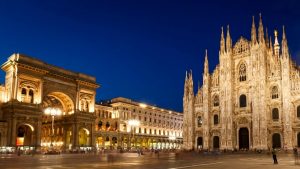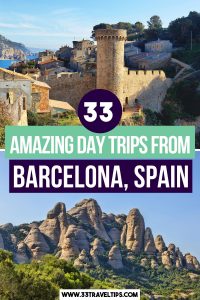
Barcelona is one of the few places in the world, which offers a bunch of activities and sights not only inside the city limits but also in close proximity. This makes the Catalan capital the perfect starting point for numerous day trips.
On this list, you’ll find the best day trips from Barcelona, Spain.
Just an hour or two away from the lively metropolis lie golden beaches, sacred mountains, peculiar monasteries, quaint Catalan villages, breathtaking national parks, and a whole host of verdant vineyards.
Let’s see what you can explore on a day trip from Barcelona!
1. Montserrat – A Jaw-Dropping Natural Phenomenon

Just an hour away from Barcelona lie the drop-dead beautiful cliffs of Montserrat (Catalan for “serrated mountains”).
Tucked below the rock formations, you’ll find the Montserrat Monastery. It’s home to the icon of the Virgin of Montserrat – one of the few Black Madonnas in Europe. If you plan on seeing the icon, calculate at least an hour of queueing.
Note: We wouldn’t recommend you do that, though, as you’ll have only a few seconds to take a look and leave. If you don’t want to queue, there’s a replica of the Black Madonna in Barcelona, in the Santa Maria del Mar Cathedral.
The Montserrat Monastery is a great starting spot for numerous hikes. Some of the mountain tops have a height of more than 3,600 ft (1,100m).
There are two funiculars (trains), which you can take from Montserrat’s Monastery.
The first one goes to Sant Joan which offers stupendous vistas of the monastery, the mountains, and the Catalan countryside. The second one will take you to the Santa Cova cave, which also goes by the name of “The Holy Grotto”. It’s an important pilgrimage site.
There’s a big restaurant near the monastery where you can restore your energy by chewing on something delicious, or just having a coffee. If you don’t feel like having a lunch, you can always visit the shops and stock up on olive oil, Catalonian chocolate (xocolat), or maybe a souvenir to bring back home.
The proximity to the city, the natural beauty of the mountains, and the impressive monastery make a visit to Montserrat one of the most popular day trips from Barcelona.
How to Get to Montserrat from Barcelona:
- By car: Get on highway C-58 and drive for around 25 mi (40 km). The monastery is accessible by car, and the parking is FREE of charge.
- By bus: Get a bus from the station that’s adjacent to Estacion Sants train station in Barcelona. The bus ride is around 90 minutes.
- By train: Get the R5 train from Plaça Espanya. The journey takes a little more than an hour. The first train leaves at 8:36 AM (try to catch this one to beat the crowds). There are trains every hour until 4:36 PM.
2. Sitges – A Beach Town with a Bohemian Charm
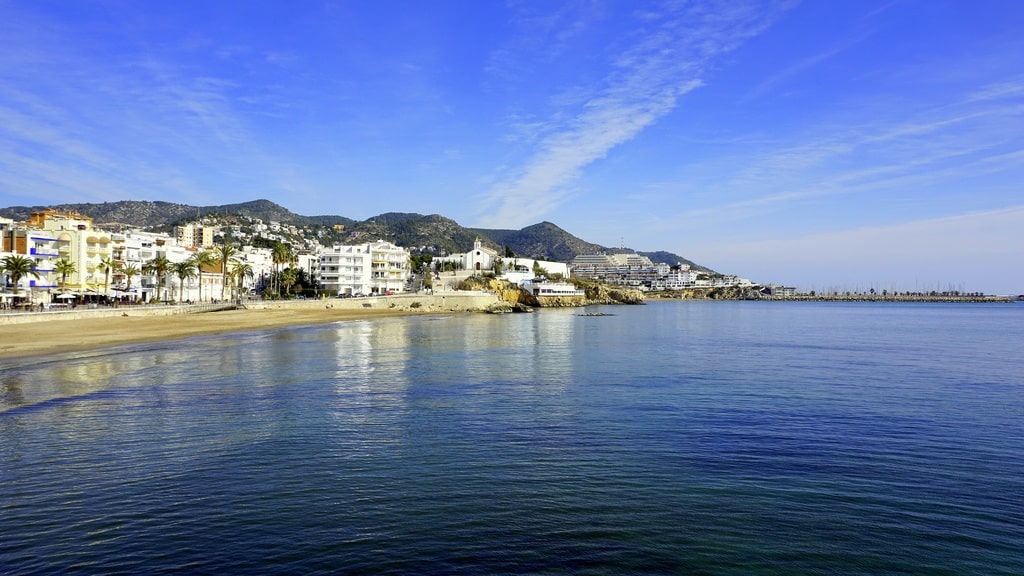
The small coastal town of Sitges takes great pride in its fantastic beaches, which attract throngs of people. Sitges outperforms all other beach towns in Catalonia thanks to its hotels, shops, infrastructure, and other amenities.
The town might lack some authenticity, but it’s great both for a relaxed stay and partying until the morning light.
Sitges vivaciously combines old and new by being home to a medieval castle, a Carnival, and a Film Festival.
The town is known as Barcelona’s Orange County. That’s because many soccer players from FC Barcelona own properties there. It’s also a famous destination for gay people.
One of the many advantages of Sitges is its proximity to Barcelona’s international airport – El Prat.
When you’re hungry, choose one of the town’s many restaurants where they serve Xató, Sitges’ traditional dish. Its main ingredients are cod, tuna, endive salad, eggplant, anchovies, and black olives. The essence of Xató is its sauce, which combines garlic, olive oil toasted almonds, scalded chilies, and condiments.
How to Get to Sitges from Barcelona:
- By car: Get on highway C-32, and head southwest. You’ll reach Sitges in about 40 minutes.
- By bus: MonBus runs the buses from Barcelona to Sitges. They leave from Ronda Universitat or Plaça Espanya. Night buses N30, N31, and N32 also go to Sitges.
- By train: Hop on the R2 train from Sants, Estació de França, or Passeig de Grácia stations. The train ride is about 35-40 minutes. Operating hours: 6:47 AM to 6:47 PM.
3. Figueres – The Delightful Birthplace of Salvador Dalí

One of the best day trips from Barcelona is the charming town of Figueres. Popular as the birthplace of Spain’s famous artist Salvador Dalí, the town is located in the Catalonian province of Girona.
In Figueres, you’ll find the Dalí Theatre and Museum (Teatre-Museu Gala Salvador Dalí), which Dali designed himself. The building is the epitome of peculiarity where you’ll find pink walls adorned with gigantic eggs.
Inside the museum, you can explore works from each of the artistic periods of Dalí – from the early cubist, fauvist, pointillist, and impressionist paintings to his classicist, surrealist, and mystical–nuclear periods.
The Spanish famous painter is not the only artist who was born in Figueres, though. Here is the hometown of Mónica Naranjo, one of Spain’s best-selling singers in the 1990s and 2000s.
The town lies around 45 minutes away from the French border, so it’s a good starting point for your travels north to France.
Just before you leave Figueres, make sure to stop at The Technology Museum of Empordà. There, you can marvel at unique typewriters, switchboards, and more than 3,000 other mechanical antiques.
How to Get to Figueres from Barcelona:
- By car: Get on highway AP-7. The 90 mi (145 km) drive takes around 90 minutes.
- By bus: Take a bus from Barcelona’s North Station (Estació del Nord) to Estació d’Autobusos in Figueres. The ride takes between 2:25 and 2:45 hours.
- By train: Get the train from Barcelona from either Sants or Passeig de Gràcia. Depending on the train, the journey takes between 55 and 90 minutes.
4. Girona – the Medieval Backdrop for Game of Thrones
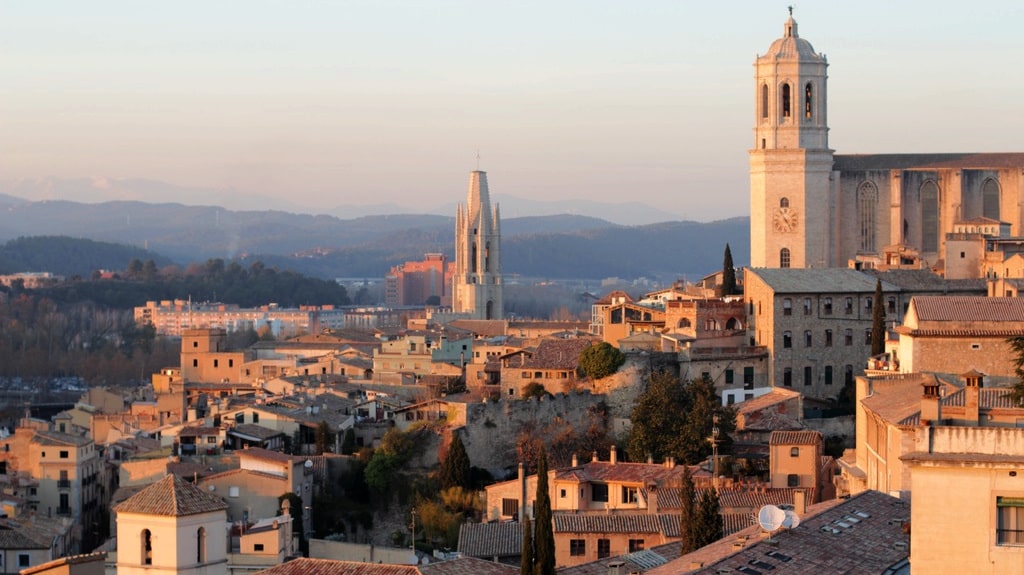
Girona is a beautiful medieval city, full of artistic, historical, and architectural highlights.
Take your time to wander the streets of the Old Town. Wherever you end up, you’ll find something to admire.
The area around the picturesque Onyar River, with its bridges and the vibrant houses lining the shores, is a must-see. The weekend flower market at the Rambla de la Llibertat and the cozy cafés are inviting you to sit down for a short break from sightseeing.
Climb the city fortification walls for a look from up high. They uncover the best views of the Gothic Cathedral and the church of Sant Félix. Discover what the different cultures that called Girona home have all left. Romans, Muslims, Jews, and Christians all made their mark on the city’s face.
The Arab Baths and the Sant Pere Galligants Monastery, as well as multiple museums, also await your visit.
And if at the end of your day trip from Barcelona you wish to return to Girona, kiss the bottom of the lioness statue in C/Calderers. Legend says this will ensure you’ll come back to Girona by doing so.
Tip: Girona is one of the Game of Thrones filming locations. The Gothic Cathedral and the Arab baths are some of the places which appear in the TV series.
How to Get to Girona from Barcelona:
- By car: Get on AP-7, and drive northeast for 64 mi (102 km).
- By bus: Hop on the ALSA or Sagales busses from Barcelona Nord. The journey is around 1:30 hours.
- By train: High-speed trains connect Barcelona and Girona. You’ll reach your destination in under 40 minutes.
5. Montblanc – a Walk Around Medieval History

Part of the Cistercian Route, the medieval walled town of Montblanc is a great place to visit and one of the best day trips from Barcelona.
Discover the legends which surround the Bover Tower and St. Jordi Gates. Explore the Gothic and Romanesque monuments spread throughout the town. Wander the cobblestoned streets and enjoy a lazy afternoon in one of the charming cafés.
If your schedule allows it, Monestir de Poblet – a UNESCO World Heritage Site – is just 5 miles (8km) away from Montblanc. The monastery is right at the foot of the Prades Mountains and dates to 1151.
But that’s not nearly as historic as some evidence of cave dwellings, stemming from Paleolithic times.
Make sure to stop and marvel at the ornate façade of Santa Maria Gothic church. Then, go behind the church where you’ll find a mound that offers splendid views over Montblanc and the Catalonian countryside.
How to Get to Montblanc from Barcelona:
- By car: Drive west on AP-7, and then change to AP-2 for 74 mi (119 km).
- By bus: No direct buses go to Montblanc, so we don’t recommend this option.
- By train: Take the train towards Lleida from Passeig de Gràcia station. The ride is about 2 hours.
6. Vic – History, Festivals, and the Best Cured Meat in Catalonia
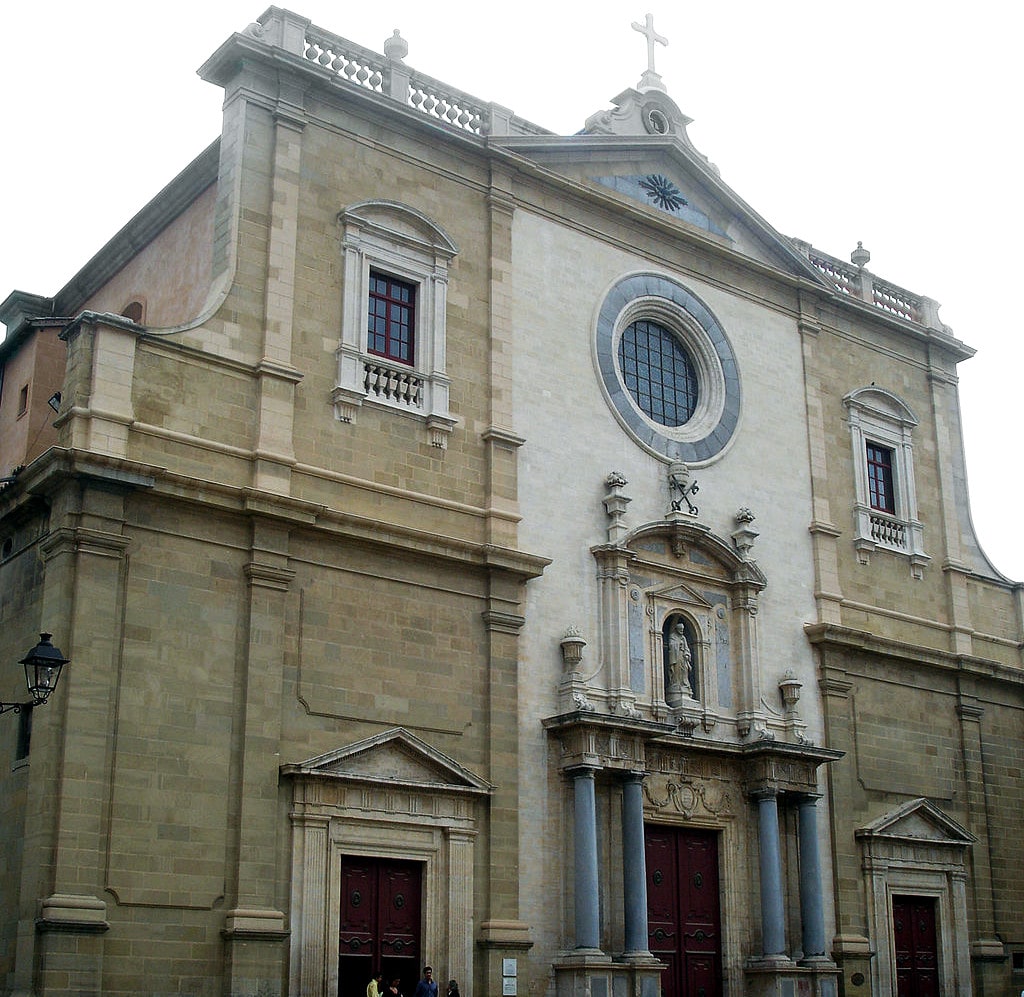
The location of Vic in the heart of Catalonia led to its establishment as one of the important towns in the area during the Middle Ages. Nowadays, the attractive Old Town will seduce you with its peculiar restaurants.
The focal point of the town is the main square, Plaça Major. The surrounding market stalls and beautiful mansions provide you with enough entertainment. Don’t miss the Mercat Medieval and the Mercat de Música Viva de Vic.
Vic produces various sausages and other pork delicacies, including fuet. Many consider the local cured meats some of the best in the region of Catalonia.
When you’ve satiated your carnivore diet, discover the 11th-century Sant Pere Cathedral. The original bell tower and its Romanesque crypt are still noticeable nowadays. Besides these fundamentals, the church also blends Baroque and neoclassical elements in a way that’s particularly fascinating.
Before you leave, ensure you stop by the Queralt Bridge that also dates back to Romanesque times, still retaining many of its original forms and features.
How to Get to Vic from Barcelona:
- By car: Drive north for 44 mi (71 km) on C-17.
- By bus: Take the bus from Barcelona Nord or Barcelona Casp Pau Claris. The ride takes around 1:30 hours.
- By train: Hop on the Renfe train from Plaça Catalunya, and you’ll be in Vic in 1:15 hours.
7. Cadaqués – One of Salvador Dalí’s Creative Spots
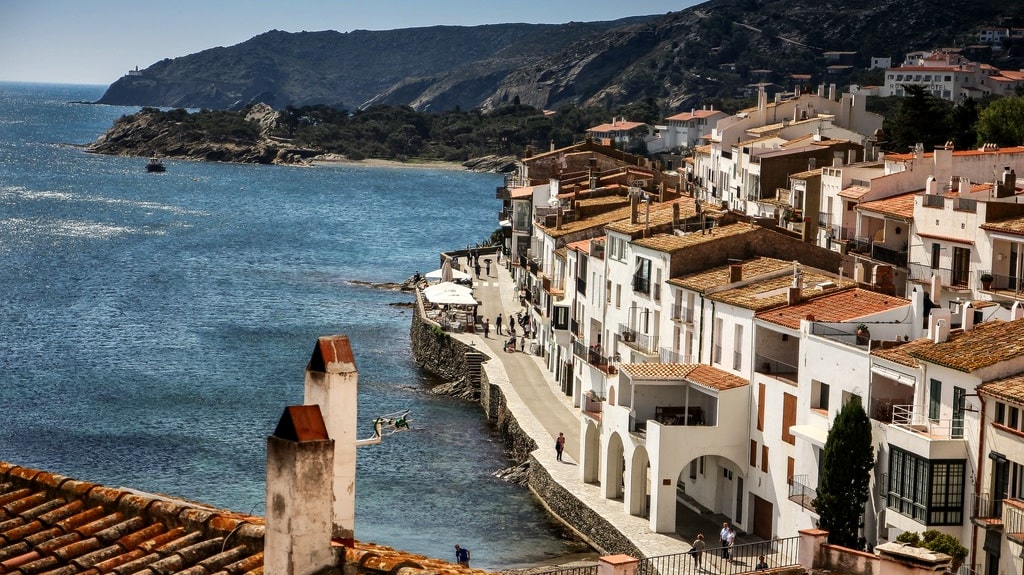
The moment you arrive in the picturesque Cadaqués with its white houses, you’ll quickly understand why this town has inspired Salvador Dalí so much.
The famous artist visited the beach town from an early age, and settled down just a short walk away from its center. His self-built house is currently a museum.
Other visit-worthy places in Cadaqués include the Santa Maria Church, the vibrant shops for local crafts and jewelry, and the numerous restaurants. A must-try local specialty is a small sponge cake in the shape of corks. It’s called tap and locals consume it soaked in alcohol.
For nature lovers, the Cap de Creus Natural Park is worth exploring. You can also visit the town’s charming beaches, the numerous coves, and the largely unspoiled rugged coastline. Alternatively, you can go on a boat trip and do some snorkeling or diving in the Mediterranean Sea.
Tip: You need a reservation to visit the Dalí house-museum.
How to Get to Cadaqués from Barcelona:
- By car: Take the windy road northeast via AP-7. The distance is 107 mi (172 km).
- By bus: this is the only public transportation option. Several buses depart from Barcelona Nord Station every day. The travel time is around 2:45 hours.
- By train: No direct trains go to Cadaqués, so we suggest you stick to the other options.
8. Tarragona – Lessons in History and Stupefying Views
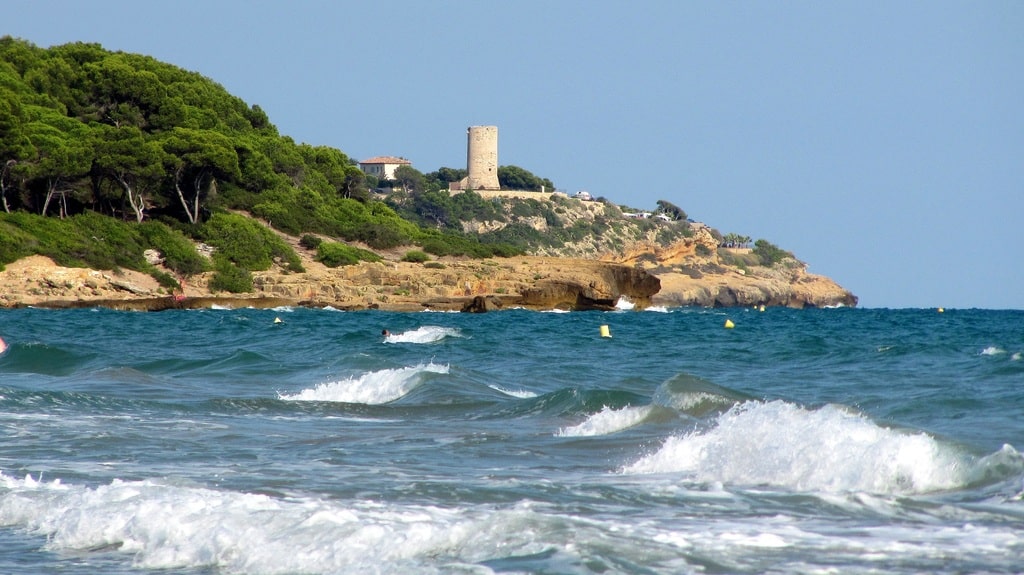
Once Tarragona was the most significant Roman provincial capital in Hispania. The remaining Roman ruins and the amphitheater serve as a reminder of those times. The town’s Archaeology Museum displays mosaics, sculptures, and everyday items.
The Roman ruins of Tarraco are a UNESCO World Heritage Site. Other buildings from that age include the Roman walls, the citadel, the Roman circus, the Necropolis, the Pretorium (a tower), the Palace of Augustus, and the Aurelian Way.
The town center is from a newer age. The old city walls and the Gothic Cathedral date back to the 12th century.
When you get tired of exploring the historical part of Tarragona, head to the main street. Rambla Nova is lined with shops, restaurants, and cafés. It starts with Balcó del Mediterrani, a gorgeous viewing point over the sea, and ends with a stunning statue of castellers, the human tower groups.
Tip: You can buy a combined ticket to Tarragona’s major attractions from the tourist office on Carrer Major. This will save you time and money compared to buying each ticket individually.
How to Get to Tarragona from Barcelona:
- By car: Head southwest on C-32 for 60 mi (97 km).
- By bus: Direct buses leave from Barcelona Sants and take 1:15 hours.
- By train: The trains from Barcelona’s Sants station will get you to Tarragona in 35 to 65 minutes.
9. Sant Feliu de Guíxols – Cork, Parties, and Rocky Beaches
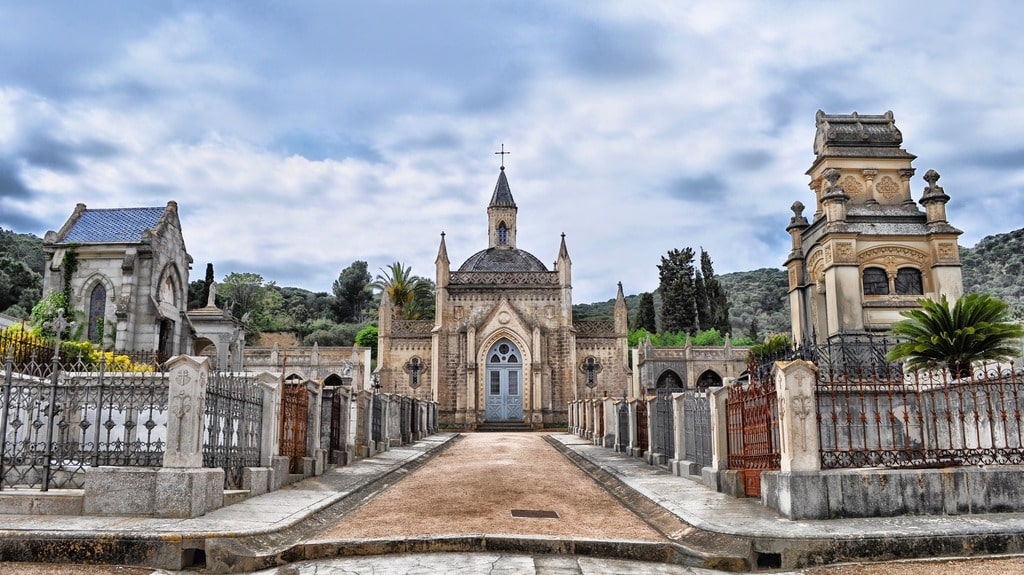
The small village Sant Feliu de Guíxols on the Costa Brava coastline is an important port and a holiday location. It’s also a major spot of the cork industry.
A large monastery hosts the town museum. The building is a protected historical and artistic monument.
The heart of the town is the marketplace. Every morning, you’ll find local fruit and vegetable vendors selling their fresh produce.
Sant Feliu de Guíxols is also known for its parties, festivals, and its carnival. Guíxols’s carnival is one of the best events on the Costa Brava.
When you’ve had enough of history lessons and dancing, get to the marina or to the town’s rocky headlands and ponder at the endless Mediterranean Sea. Diving and other water activities are also an option if you’d like to speed up your adrenaline.
And if you love exploring rocky beaches, Sa Caleta might be your best shot.
How to Get to Sant Feliu de Guíxols from Barcelona:
- By car: Drive northeast on AP-7 for 67 mi (108 km).
- By bus: Hop on the bus from Barcelona Nord. The journey is around 1:30 hours.
- By train: No direct trains go to Sant Feliu de Guíxols, so we suggest you go by car or bus.
10. Blanes – a Family Holiday Destination with Catalan Charm
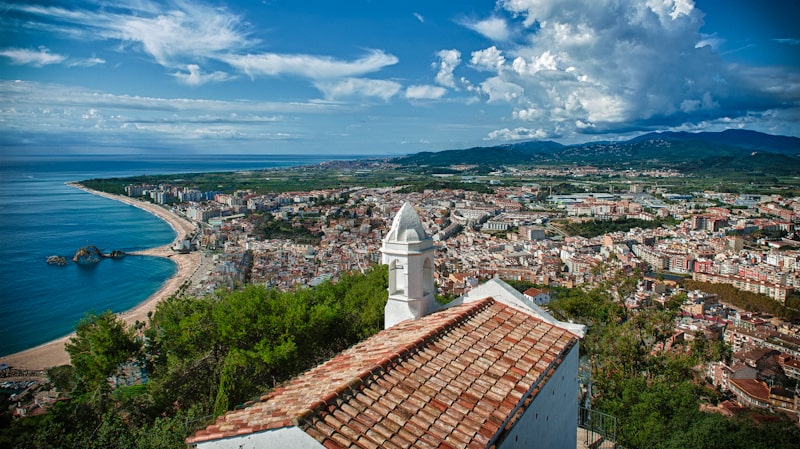
Situated on a small peninsula, Blanes attracts visitors with its charming old town and beautiful beach. It is easy to get there as it’s the closest to Barcelona settlement on the Costa Brava.
Despite the fact that the loud Lloret de Mar is Blanes’ neighbor, the latter has not lost its fascinating Catalan identity. Neither has it succumbed to the plastic tourism of burger stalls, tacky souvenir kiosks, or drunken youngsters who believe holidays are just for downing cheap shots.
In fact, the Catalan authorities categorize Blanes as an FHD – Family Holiday Destination. The gorgeous weather, coupled with the local hospitality, is what draws families to Blanes every year.
There’s an old castle that overlooks the town and offers you a great view of the sea, the coastline, and Blanes itself. The hike up there is a bit strenuous but worth every drop of sweat 😉
Quench your hunger when you get back to town at one of Blanes’ many restaurants that seduce visitors with mouthwatering seafood choices.
How to Get to Blanes from Barcelona:
- By car: Get on C-32 and drive northeast for 44.5 mi (71.5 km).
- By bus: The bus ride from Barcelona Nord will take you a little less than two hours.
- By train: The trains leave from Barcelona Sants. The ride takes 1:30 to 2:00 hours.
11. Tossa de Mar – Crowds, Beaches, and Castles
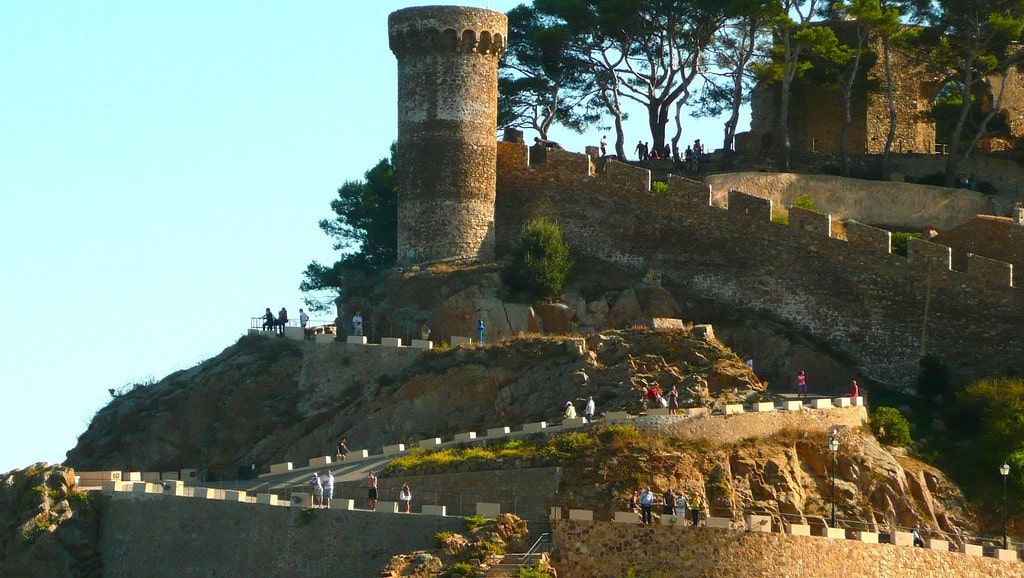
Considered one of the most beautiful towns on the Costa Brava, Tossa de Mar will enchant you not only with the lovely beaches surrounding it but also with its historical sites. Nowadays, the former fishing town is a buzzing tourist spot.
On this day trip from Barcelona, you could explore the Roman archaeological site, marvel at the century-old lighthouse, and walk around the hilltop castle ruins. The views of the Mediterranean Sea from the lighthouse, as well as from the castle Vila Vella, are magnificent.
The town’s main beach is rather small. However, you’ll easily find many other cozy spots and secluded bays around Tossa de Mar. The whole coastline is the epitome of gorgeousness, with jaw-dropping crags and breathtaking rock formations keeping you company.
Within a few miles from Tossa de Mar, you’ll find several shimmering beaches, such as Cala Pola, Mar Menuda, Cala Bona, Cala Giverola, and Cala Futadera.
Mountain biking and surfing are popular activities to try in and around Tossa de Mar.
How to Get to Tossa de Mar from Barcelona:
- By car: Follow AP-7 northeast for 65 mi (104 km).
- By bus: Hop on a bus from Barcelona Nord. The journey takes around 1:20 min.
- By train: There are no direct trains to Tossa de Mar, so we suggest you save time and pick one of the above options.
12. Sant Pol de Mar – Relaxation, Family Feel, and Chiringuitos
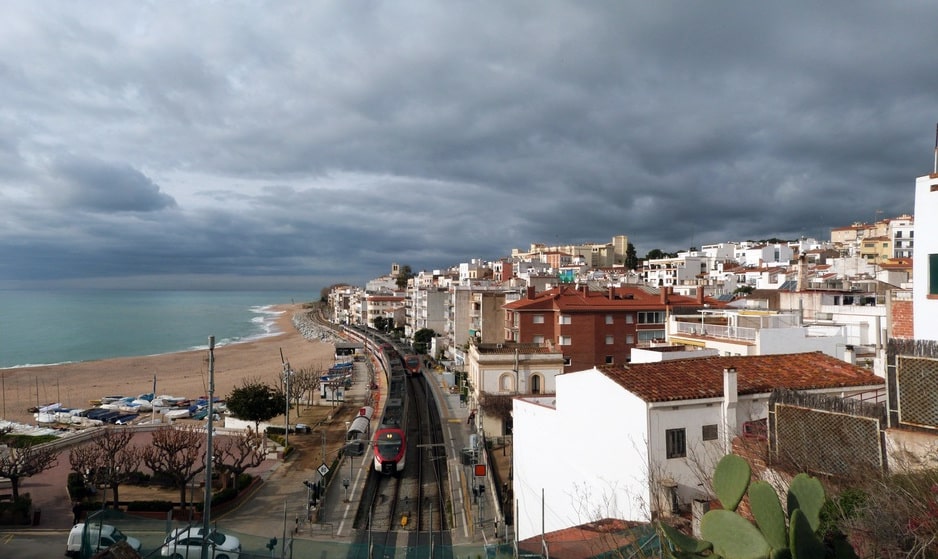
If you’re searching for an easy-to-get-to and unpretentious beach town, Sant Pol de Mar is your place to visit on a day trip from Barcelona.
Unlike other towns on the Costa Brava, this seaside gem doesn’t lure tourists with fancy beach bars and exquisite restaurants. On the contrary, the atmosphere here is very relaxed.
Narrow streets with cozy local restaurants lead to a strip of white sand and turquoise waters. Chiringuitos (beach bars) will satisfy your cravings for seafood and paella.
When you’ve had enough beach and food orgasms, why not head to Sant Pol’s Painting Museum (Museu de Pintura)? It hosts an impressive collection of Catalan paintings, representing mainly figurative painters.
How to Get to Sant Pol de Mar from Barcelona:
- By car: Get on C-32 and head northeast for 33 mi (53 km).
- By bus: Buses depart from Barcelona Nord a few times a day. The ride takes exactly 1 hour.
- By train: No train connects Barcelona with Sant Pol de Mar, so please use one of the other options we’ve listed above.
13. Calella de Mar – Fantastic Beaches and Historic Towers
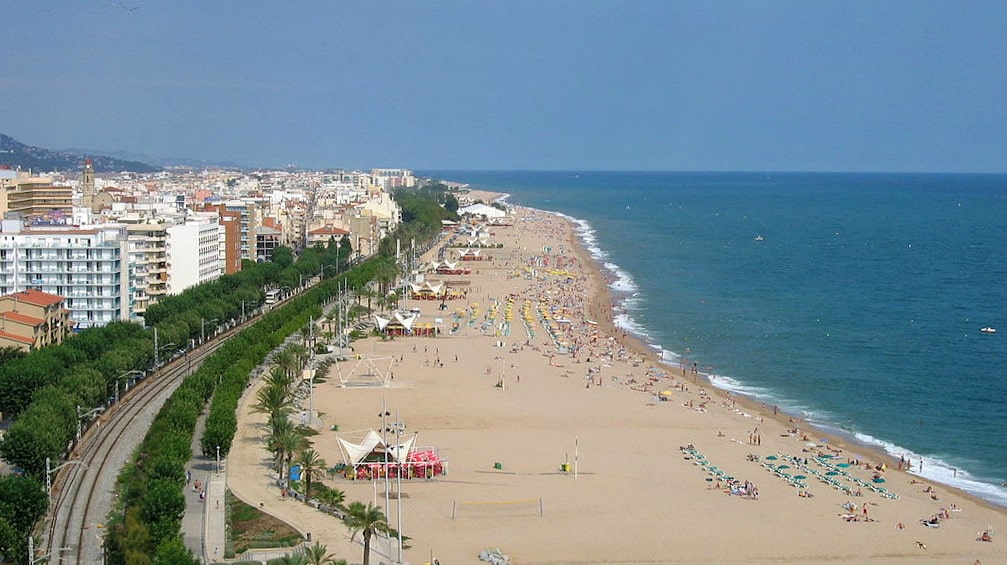
The tiny yet gorgeous town of Calella de Mar awaits you just 36 mi (58 km) northeast of Barcelona. Three things will immediately grab your attention:
- The fantastic beachline.
- The two imposing towers, known as Les Torretes.
- The lighthouse that overlooks the town from the southwest.
Calella’s beach consistently receives the European Quality Blue Flag* award. Visit the southern stretch as it’s quieter than the northern and central parts.
*If a beach has a Blue Flag, this indicates its high environmental and quality standards.
The Turrets of Calella were constructed as optical telegraphs by the transmission service. The cultural site consists of two towers. The first one was erected in 1848 and had military uses. The second one was built in 1857 and had civil use.
The Calella Lighthouse has been functioning since 1859. With an elevation of 160 ft (50 m) above sea level, you can see the light from 18 nautical miles (33 km).
If you happen to be in Calella de Mar in summer, you can hop on a bouncing castle in the water.
How to Get to Calella de Mar from Barcelona:
- By car: Drive northeast on C-32 for 35 mi (57 km).
- By bus: Several buses a day go to Calella de Mar from Barcelona Nord. The ride takes a little over an hour.
- By train: No direct trains go to Calella.
14. Calella de Palafrugell – Rugged Coastline, Botanical Garden, and a Music Festival
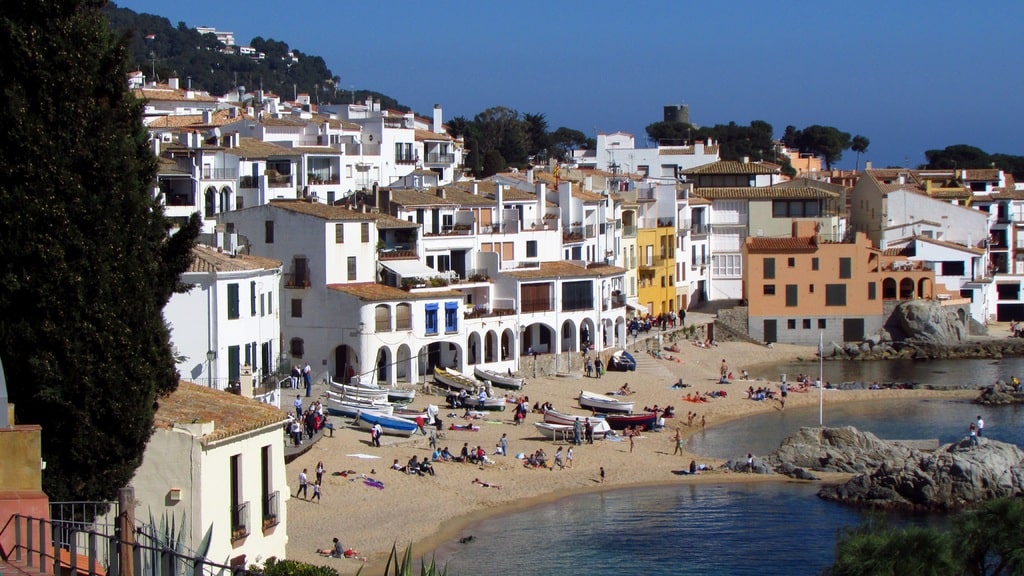
An old fishing village in the past, the incredibly charming Calella de Palafrugell is today a beach getaway for many. Get lost in one of the narrow streets of the Port Bo Neighborhood where two-floor fishermen’ houses adorn the scenery.
The ancient settlement sits on a rugged coastline, dotted with numerous tiny coves.
Summer here is busy but not nearly as busy as other resort towns on the Costa Brava such as Lloret de Mar, for example.
When you grow tired of developing your tan lines on the Blue Flag beaches, you can venture to the Cap Roig headland. There, you’ll find the gorgeous Botanical Gardens, which hosts the Cap Roig Music Festival in summer. While at the Cape, stop for a while and admire the crystal-clear waters of the Mediterranean Sea.
In recent years, the town has become more upscale with high-end hotels and restaurants mushrooming around.
How to Get to Calella de Palafrugell from Barcelona:
- By car: AP-7 will take you directly to the town. The distance is 79 mi (127 km).
- By bus: No direct buses go to Calella de Palafrugell. You can travel from Barcelona Nord to Palafrugell, and then change busses to Calella de Palafrugell. The journey takes around 3:30 hours.
- By train: There are no direct trains either, so it’s easier to go by car or bus.
15. Delta de L’Ebre – Rivers, Wetlands, and Rice Paddies

Designated by the European Commission as a European Destination of Excellence (EDEN), the Ebro Delta is your go-to option if you’re a nature lover.
In the Delta’s natural park, you’ll find everything from rivers and wetlands through beaches and lagoons to islands and even rice paddies.
The rich environmental variety makes the Delta de L’Ebre a home to countless plants and animals.
Besides the incredible variety of birds (300 out of the total 500 bird species in Europe live there), you can also marvel at fish, reptiles, amphibians, and invertebrates. If you haven’t paid attention to your biology teacher in high school, just know that you have a chance to spot a flamingo there!
The fascinating combination of shimmering beaches, wetlands, rice fields, and birds flying from all directions give this place a charm like no other.
Peculiar Fact: 20% of Spain’s and close to 99% of Catalonia’s rice comes from the Ebro Delta. And we all know that rice is a main ingredient of the delectable paella, as well as many other scrumptious dishes.
For a different day trip from Barcelona, opt for the otherworldly Ebro Delta. You won’t be disappointed.
How to Get to Delta de L’Ebre from Barcelona:
- By car: Drive southwest on C-32 and AP-7 for 113 mi (182 km).
- By bus: No direct buses go to Delta de L’Ebre. You can take a bus from Barcelona to L’Aldea Poble, and then a taxi (fare $17-22) to Deltebre.
- By train: Hop on the train from Barcelona Passeig de Gràcia to Ampolla-Perello. Then, get a taxi (fare $19-24) to Deltebre.
16. Pals – a Unique Combination of Adventure Activities and Historic Appeal
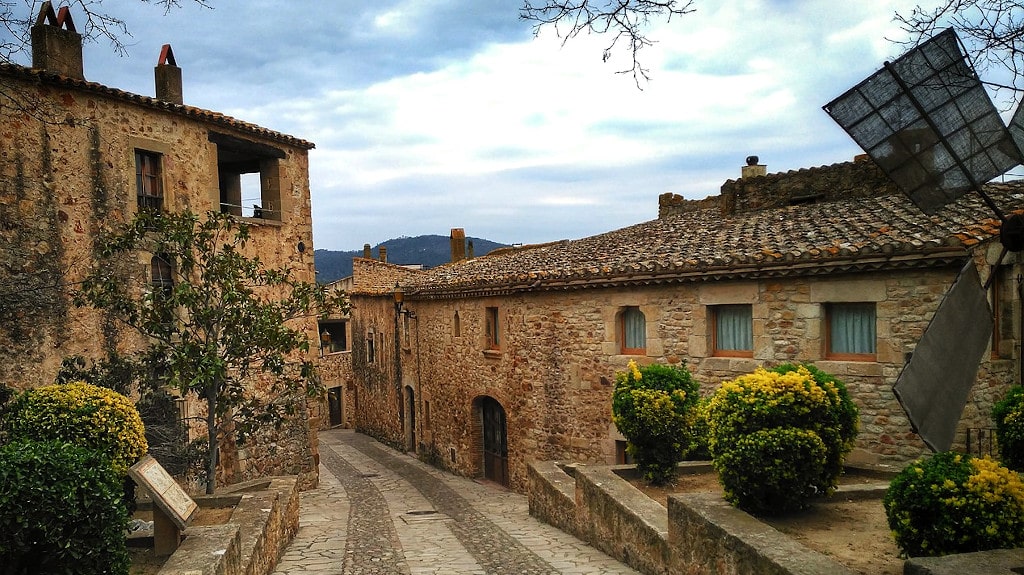
Your list of day trips from Barcelona should definitely include the charming Catalonian town of Pals. Perched on a hilltop and constructed around a Romanesque tower, the settlement has maintained its medieval appearance so well that it feels like you’ve stepped out of a time machine.
Historic from north to south and from east to west, you’ll find great delight exploring the town’s Gothic Quarter. There, in a maze of narrow cobbled streets, you’ll admire stone balconies, arched windows, and crescent arches.
Head to the hilltop where a stunning panorama of the Costa Brava strip and the Catalonian countryside unveils before your eyes.
The beach in Pals attracts holiday seekers in summer. If you’re feeling adventurous, though, head to the Illa Roja beach, a nudist beach. And when you grow tired of simmering in your own sweat, choose a cliff and jump into the sea.
The plunge to the water is a 13-16 ft (4-5 m) drop.
How to Get to Pals from Barcelona:
- By car: An 81-mi (131-km) drive northeast will take you to Pals.
- By bus: Buses to Pals leave from Barcelona Nord. They’ll take you there in around 2:30 hours.
- By train: No direct trains go to Pals, but you can get one to Flaçà from Barcelona’s Passeig de Gràcia, and then hop on a bus to Pals. The whole journey takes 3:15 hours.
17. Garrotxa Volcanic Zone Natural Park – Lava Flows, Natural Reserves, and Medieval Castles
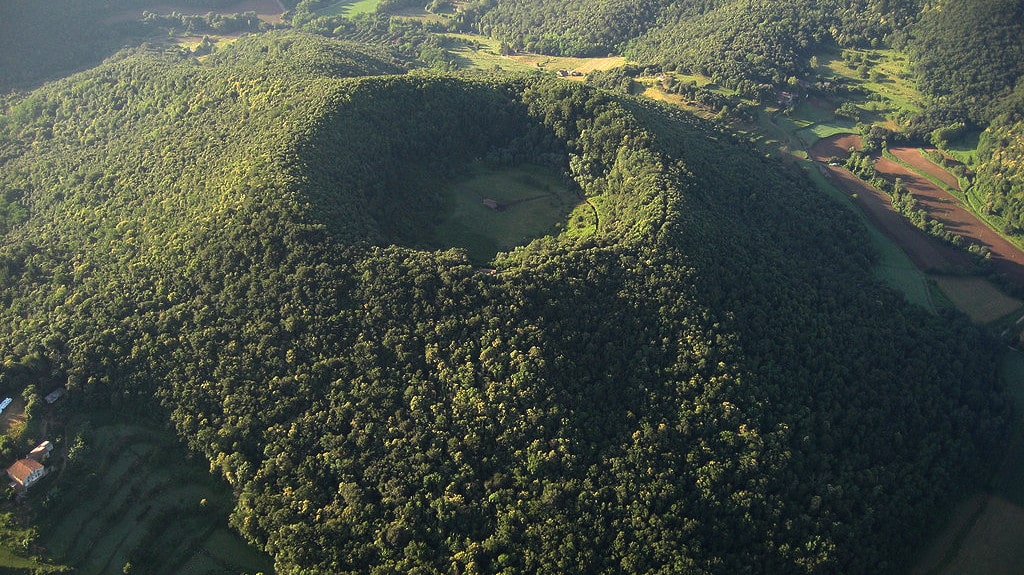
Did you know that there’s a natural park that covers a Holocene volcanic field just an hour and a half away from Barcelona? The Parc Natural de la Zona Volcànica de la Garrotxa is home to 40 inactive volcanos. The last recorded eruption occurred 11,000 years ago.
The Garrotxa Volcanic Zone Natural Park covers an area of a little over 12,000 hectares where you’ll have the chance to marvel at natural reserves, volcanic cones, lava flows, as well as medieval towns and castles.
The actual scenery of the park is not volcano-like, but the feeling of being inside a real volcano crater is exhilarating, to say the least. The hike up to the rim and into the crater is pleasant.
Most dormant volcanos offer jaw-dropping panoramic views of the area and the surrounding towns. Make sure to stop in Santa Pau, a picturesque little town, which is just a few miles away.
The field of Garrotxa is a monogenetic volcanic field, and each volcano represents a single eruption period. Experience the true charm of the place by tasting some local delicacies that people cook on volcanic rocks.
There’s plenty of gorgeous paths to hike, and some might take you to small chapels that are sitting inside a volcano crater!
How to Get to the Garrotxa Volcanic Zone Natural Park from Barcelona:
- By car: Take C-17 north for 67 mi (108 km). It’s the fastest route and avoids closures on C-31.
- By bus: No buses go to the park.
- By train: An expensive option is to take a train from Barcelona Sants to Girona, and then a taxi (fare $85-110) to the park.
18. Mataró – a Roman Town with a Modernist Look
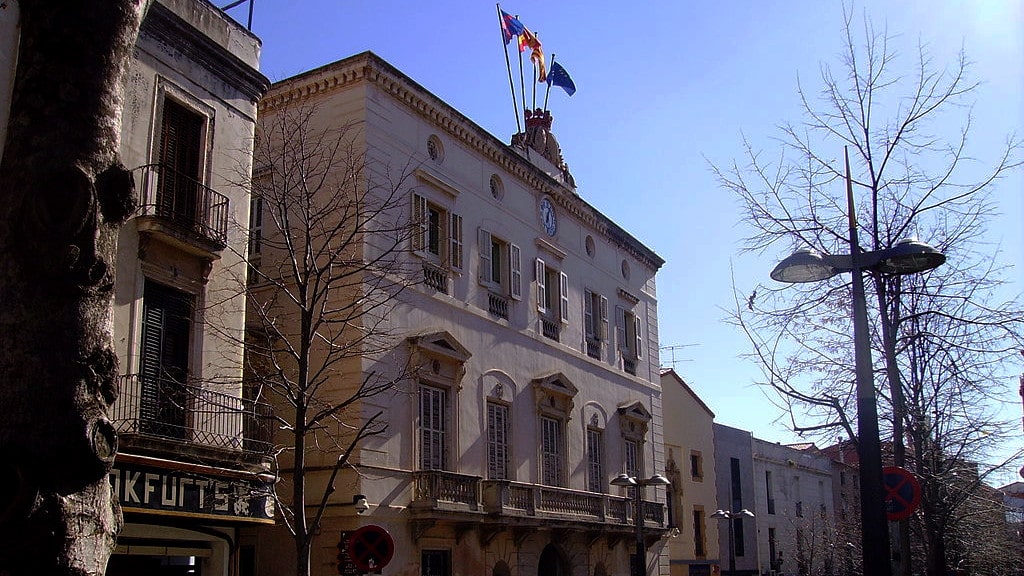
Another great idea for a day trip from Barcelona is the pretty town of Mataró. Home to many Modernista constructions, the town is also home to a less-crowded beach, and an impressive marina.
Situated just a short ride away from Barcelona, Mataró’s history dates back to Roman times. Nowadays, you can visit a Roman bathhouse that originates in the 1st century BC. Its local name is Torre Llauder.
For a delightful walk along the beachfront, head to the charming Passeig Marítim.
When you grow tired of sauntering around the city’s streets, satiate your hunger with a delectable paella. One of the best places to do that is Can Margarit.
Peculiar Fact: The first railway in peninsular Spain was the Barcelona – Mataró line. It opened in 1848 and was due to the Catalan businessman Miquel Biada who was Mataró native.
How to Get to Mataró from Barcelona:
- By car: Head northeast on C-31 and then C-32. The driving distance is just 20 mi (32.2 km) and it’ll take take you 40 to 45 minutes to reach your destination.
- By bus: Buses depart from Barcelona’s Plaça de Tetuan.
- By train: No direct trains travel to Mataró.
19. Campdevanol – Strenuous Hikes and Heart-stopping Waterfalls
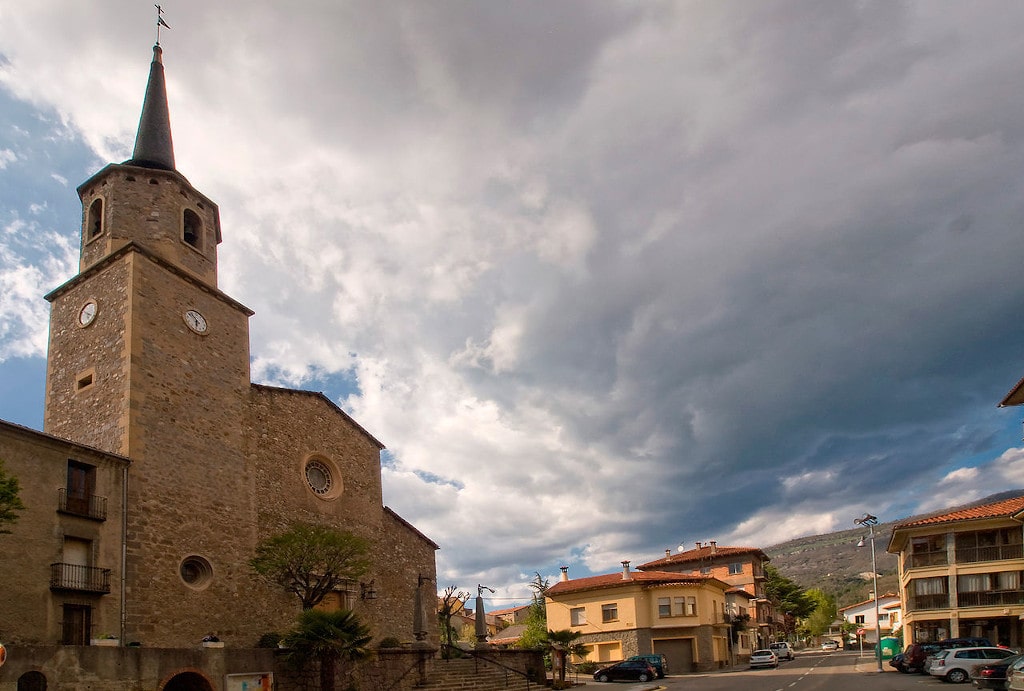
Campdevànol is a small village in the Catalonian province of Girona. The village is picturesque itself, but that’s not the only reason why you’d want to visit the area. In its vicinity, you’ll find The 7 Waterfalls of Campdevànol.
A pleasant yet somewhat long hike will take you through pine forests to the seven drop-dead gorgeous waterfalls. Pack your best hiking shoes, something tasty to keep the energy flowing, and plan between 6 and 8 hours to complete the route comfortably.
Note: In summer, the natural park has a fee of around 5 EUR and park rangers patrol it. Swimming is allowed in the waterfalls area, but jumping from the top is not. Don’t smoke or do a campfire as you’ll be fined if they catch you on sight.
If you’re feeling adventurous, refresh yourself in the water. Just bear in mind that it’s coming from the top of the mountain, which means it’s seriously cold. Admiring the waterfalls is also an option, especially while enjoying a glass of cava or red wine (unless you’re the driver!).
How to Get to Campdevànol from Barcelona:
- By car: Hop on C-17 and drive north for 67 mi (111 km).
- By bus: No direct buses go to Campdevànol, but you can get one from Barcelona to Ripoll, and then change to the bus to Campdevànol.
- By train: Trains depart from Plaça Catalunya and take around 2 hours to reach Campdevànol.
20. Vilafranca del Penedès – Wine, Fiestas, and Human Towers
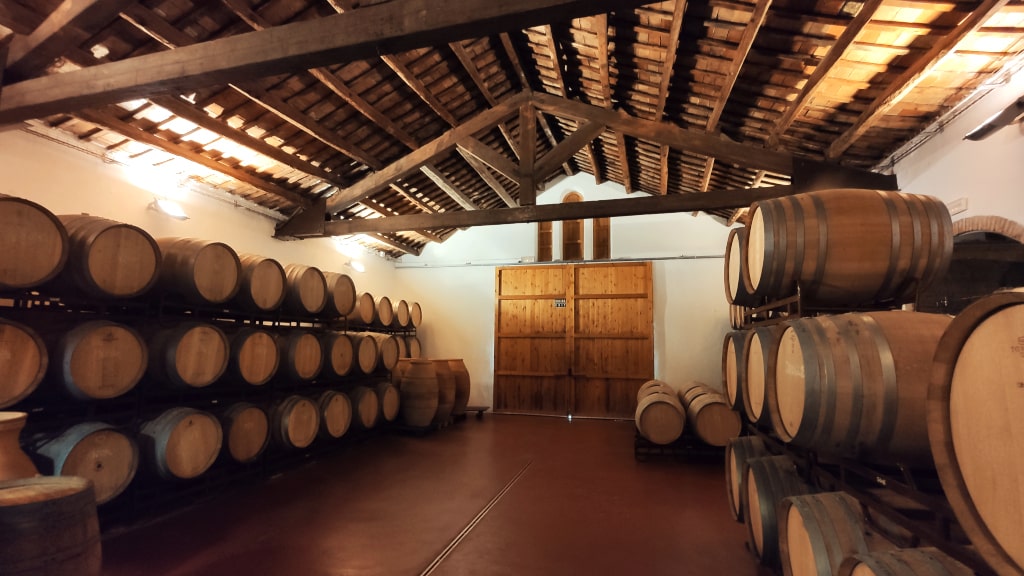
Speaking of cava (the Spanish sparkling wine), the town of Vilafranca del Penedès is the best option for a day trip from Barcelona if you’re a wine worshipper. Vilafranca is a wine production center, and it’s especially known for its D. O. Penedès wine.
In the town, you’ll find numerous restaurants where you can satiate your wine thirst, and accompany it with delicious local dishes.
If you travel at the end of August, you’ll witness the famous fiestas that honor San Félix. A spectacle of concerts, folk dancing, and fireworks will keep you busy and entertained.
If you’ve heard of the famous castells (human towers), that’s one of the top things to do and see in Villafranca. The amazing feats, declared a UNESCO Intangible Cultural Heritage of Humanity, occur on the splendid Plaça de la Vila.
When you grow tired of wine and dancing, explore the city’s historic center where 20th-century houses will strike you with their charm and elaborateness.
How to Get to Vilafranca del Penedès from Barcelona:
- By car: Drive west via AP-7 for 37 mi (60 km).
- By bus: Buses go from Barcelona – Palau Reial to Vilafranca del Penedès. The journey is around 45 minutes.
- By train: The R4 line from Barcelona’s Plaça Catalunya will take you to Vilafranca del Penedès in about an hour.
21. Besalú – A Picturesque Walk in Medieval Times

If you’re a culture vulture and a history aficionado, there’s no better day trip from Barcelona than visiting Besalú. Despite its tiny size, the medieval town packs a powerful historical punch.
When there, soak up every inch of the medieval town while trying to resist the temptation to take a photo at every corner. Besalú is incredibly picturesque.
Start your journey by marveling at the 12th-century Romanesque bridge that straddles the Fluvià River.
Then, you can either explore a ritual Jewish bath (mikvah) that dates back to the Middle Ages, get lost in the town’s charming cobbled streets, or discover the captivating Museum of Miniatures.
The authorities rediscovered the Jewish bathhouse in the 1960s. Originally, it was an annex to a synagogue. Nowadays, most of the synagogue is history, but the mikvah is in a great condition.
The town’s steep stone staircases and cobblestoned streets are a nice workout challenge, so don’t forget to put on your best walking shoes.
How to Get to Besalú from Barcelona:
- By car: Drive northeast on AP-7 for 83 mi (133 km).
- By bus: Buses depart from Barcelona – Olot per Banyoles. The ride to Besalú is 1:40 hours.
- By train: The best option you have is to take a train from Barcelona Sants to Girona, and then change to a bus from Girona to Besalú.
22. Castellfollit de la Roca – Crags, Rivers, and Countryside
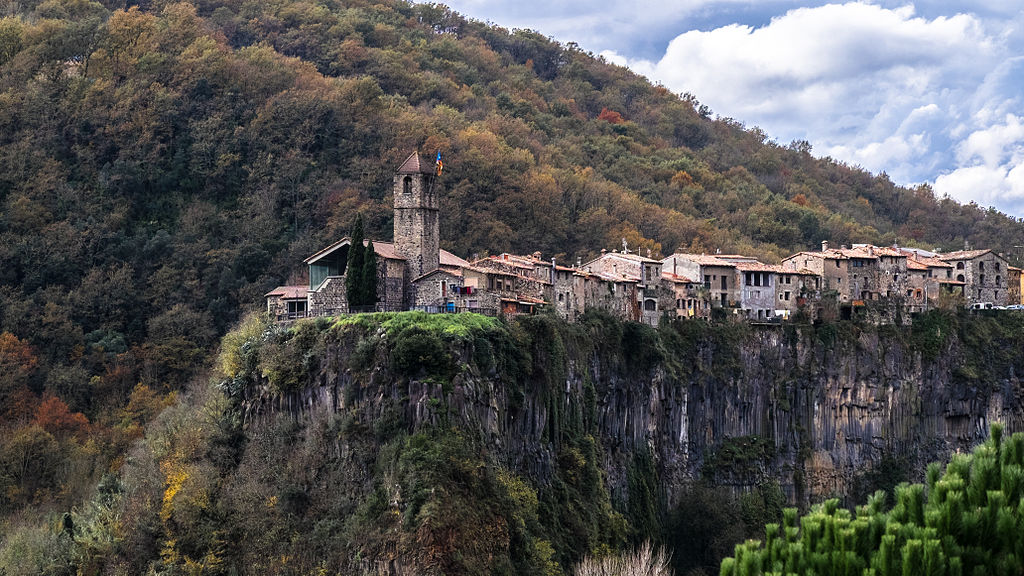
Fancy another medieval town? You can combine your visit to Besalú (see the previous day trip on this list) with a journey to Castellfollit de la Roca.
Perched on a hilltop, the small village provides you with a fantastic vista of the confluence of the Fluvià and Toronell rivers and Catalonia’s countryside.
The town sits on a basalt crag that’s more than 160 ft (50 m) high and half a mile long. Since Castellfollit de la Roca is in a volcanic area, the overlapping of two lava flows formed the town.
You’ll easily forget the town is just a few feet away from a steep drop when you get lost in its network of tiny squares and narrow streets. Pay special attention to the roads as they’re made from volcanic rocks.
Don’t miss the church of Sant Salvador, which is very close to the edge of the cliff. Dating back to the 11th century, the church functioned until the outburst of the Spanish Civil War.
If you’d like to combine your carnivore cravings with a history lesson, stop at El Museu de l’Embotit (the Museum of Cured Meats). Discover how the Spanish prepared meat during the ages in the peculiar museum, which opened its doors in 1933.
How to Get to Castellfollit de la Roca from Barcelona:
- By car: Get on C-17 and drive northeast for 74.5 mi (120 km).
- By bus: Take the Transports Elèctrics Interurbans S.A. from Barcelona. The ride takes 1:50 hours.
- By train: No direct trains reach Castelfollit de la Roca.
23. Lloret de Mar – Buzzing Nightlife, Gorgeous Beaches, Gothic Architecture

Want to party in a gorgeous coastal town without breaking the bank? Lloret de Mar might be your best choice. More than 100 bars and nightclubs make the town an attractive destination for young people from all around the globe.
But Lloret de Mar is much more than parties and drinking.
The town’s main beach is among the best Costa Brava beaches, consistently winning the Blue Flag award for its high environmental levels and overall cleanliness.
To avoid the summer crowds, venture north or south of town, and you’ll find other beaches that are equally (if not more) gorgeous.
When you feel like you’ve had enough of sun and partying, visit the Castle of Sant Joan to the east. It’s situated on a medieval hilltop and offers jaw-dropping views of the area.
To satiate your architecture love, explore the central Iglesia de Sant Romà. The church blends modernist and Catalan Gothic architecture in a vibrant fusion.
For the ultimate travel experience, visit the Santa Clotilde Gardens. Designed in the style of the Italian Renaissance on a cliff top, they offer staggering sea panoramas. Note that the gardens contain numerous plant species but no flowers.
How to Get to Lloret de Mar from Barcelona:
- By car: Drive northeast for 48 mi (77 km) on C-32.
- By bus: Take the bus from Barcelona Nord. The journey takes around 55 minutes.
- By train: There are no direct trains to Lloret de Mar, so we don’t suggest using this type of transportation.
24. Grandvalira, Andorra – Heaven for Skiers and Snowboarders

Less than three hours north of the warm Barcelona lies Grandvalira. The resort is a skiing and snowboarding paradise for winter lovers of all ages.
Situated on the largest station in the Pyrenees, Grandvalira has experienced numerous innovations and expansions thanks to a major $1.1 billion (€1 billion) investment.
Nowadays, the resort’s lifts can handle more than 100,000 skiers an hour. All this means that you can forget about queuing, making it one of the best day trips from Barcelona.
Don’t worry if there’s not enough snow, though. Grandvalira possesses an extensive network of snow cannons that can quickly cover 65% of the resort’s entire territory.
The place invites you with:
- 130 mi (210 km) of skiable slopes,
- 127 slopes of all difficulty levels,
- 60 restaurants and dining options,
- 20 adventure activities,
- 7.5 mi (12 km) of freeride areas,
- 5 children’s areas,
- 3 snowparks (one of which for nighttime), and
- 3 World Cup slopes.
Just don’t forget to take a moment and admire the marvelous winter scenery of the Pyrenees.
Note: Andorra is not part of the EU or Schengen, but all US and EU citizens can enter visa-free.
How to Get to Grandvalira from Barcelona:
- By car: Take the C-16 road and drive for 127 mi (204 km) north.
- By bus: Three companies travel
from Barcelona to Andorra:
- Directbus from El Prat Airport and Barcelona Sants;
- Andybus – solely from El Prat;
- ALSA – from Barcelona Nord.
- By train: No direct trains go to Grandvalira, so we don’t suggest this type of transportation.
25. La Molina – Spain’s First Ski Resort

If you don’t wish to leave Spain, but you still want to ride some steep white slopes, La Molina is a great alternative.
Sitting in the Province of Girona, north of Barcelona, the ski resort is ideal for both skiing and snowboarding. 87 mi (141 km) of exhilarating slopes await you to pump up your adrenaline.
27 lifts transport winter fans from elevations of 5,301 ft (1,616 m) to 8,303 (2,531 m). La Molina, together with Masella, forms the Alp 2500 resort.
The place has some historical significance because Spain opened its first ski lift in La Molina in 1943. Spain’s first ski school started there a year later.
The general season goes on from late November until late April. The opening times are from 9 AM to 4 PM.
Day ticket in the main season costs:
- €48 for adults.
- €44 for youth.
- €38 for children.
How to Get to La Molina from Barcelona:
- By car: You can reach La Molina by car via C-16 or C-17 in around 2 hours.
- By bus: The bus ride from Barcelona Sants to La Molina takes around 3:30 hours.
- By train: No direct trains reach La Molina, and you’ll need to change several trains to get there. For that reason, we don’t recommend traveling by train.
26. Vall de Núria – Skiing, Railways, and Landscapes
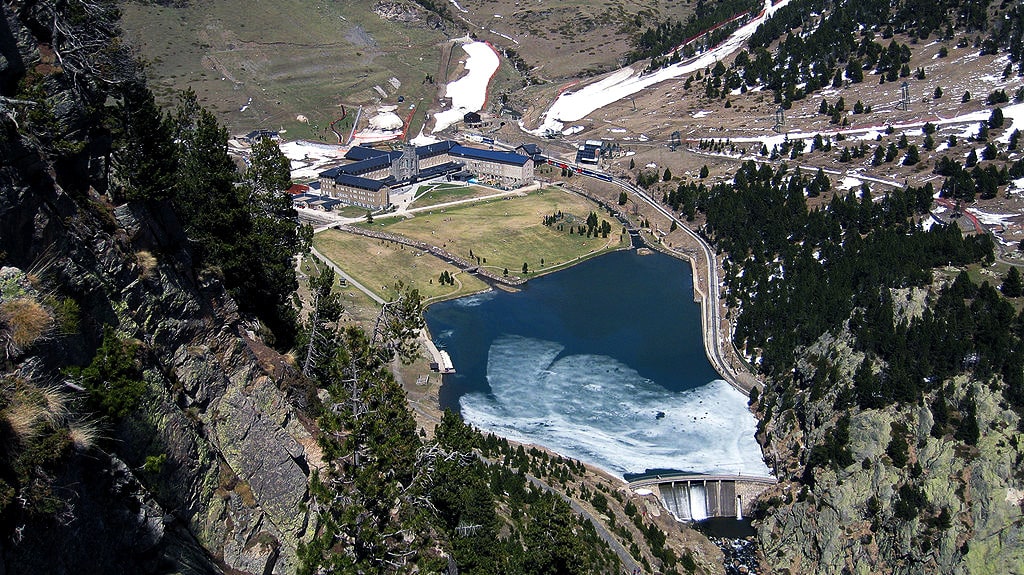
Another ski option that you can do in a day trip from Barcelona is Vall de Núria. The Valley of Núria is a fantastic combination of vast basins and heart-stopping landscapes.
Besides the magnificent 9,850 ft (3,000 m) peaks all around, there’s something unusual that awaits you in the valley – a rack railway. That’s the main form of transport in Vall de Núria. It takes you up an incline of 3,300+ ft (1,000+ m) and covers a distance of 7.7 mi (12.5 km).
The beautiful resort has prepared for you:
- 4.7 mi (7.6 km) of skiable slopes;
- 11 alpine skiing pistes (3 green, 3 blue, 3 red, 2 black);
- Elevations between 6,443 ft (1,964) and 7,388 ft (2,252 m);
- 5 ski lifts with a capacity of 4,595 skiers per hour.
When you want a break from skiing, you can visit the Leisure Park, do some ice scuba diving, join a guided mountain activity, or just eat your heart out in one of the resort’s restaurants.
How to Get to Vall de Núria from Barcelona:
- By car: Via C-17, drive north for 82 mi (132 km) to Núria.
- By bus: No direct buses go to Vall de Núria. You can get a bus from Barcelona to Ripoll, and then hop on a taxi to the valley ($40-$55 fare).
- By train: There aren’t any direct trains to the valley, and you’ll need to make several changes with buses, so we don’t suggest to travel by train.
27. Empuriabrava – Beaches, Sky Diving, and Nightlife
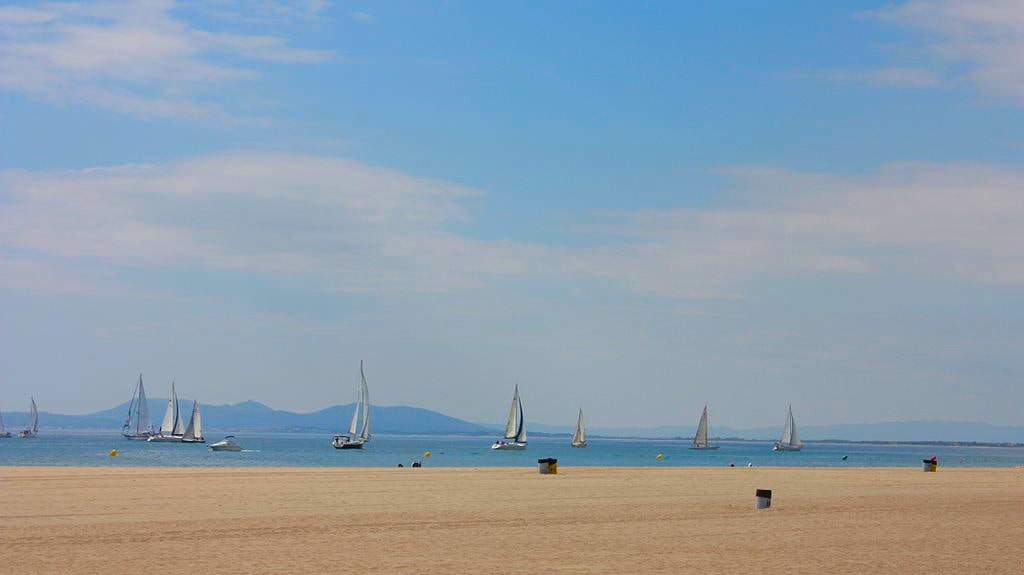
Sporting 15 mi (24km) of navigable waterways, Empuriabrava (Ampuriabrava in Spanish) is Europe’s largest residential marina.
Sitting in the Gulf of Roses, and in the mighty embrace of the Natural Park of the Aiguamolls de l’Empordà, the beach town became a tourist destination in 1975.
Empuriabrava’s wide sand beach provides a great opportunity for lazing under the generous Mediterranean sun.
When you’ve had enough of idling and you want to pump up your adrenaline, head to the town’s aerodrome. Just north of Empuriabrava, it offers a broad range of air sports, including skydiving of all levels.
Peculiar Fact: Empuriabrava’s skydiving school is considered to be among the TOP 3 in the world.
The town boasts numerous bars, tapas restaurants, and discos where the vibrant nightlife lasts until the small hours.
If you’re a history aficionado, we’ll have to disappoint you, though. No building is older than 45 years.
How to Get to Empuriabrava from Barcelona:
- By car: Get on AP-7 and drive for 95 mi (153 km) northeast.
- By bus: Hop on the bus to Empuriabrava from Barcelona Nord station.
- By train:No direct trains go to Empuriabrava. What you can do is take a train from Barcelona Sants to Figueres Vilafrant, and then get a taxi from there to Empuriabrava ($24-$29 fare).
28. Medes Islands – Diving, Swimming, and Admiring Marine Wildlife
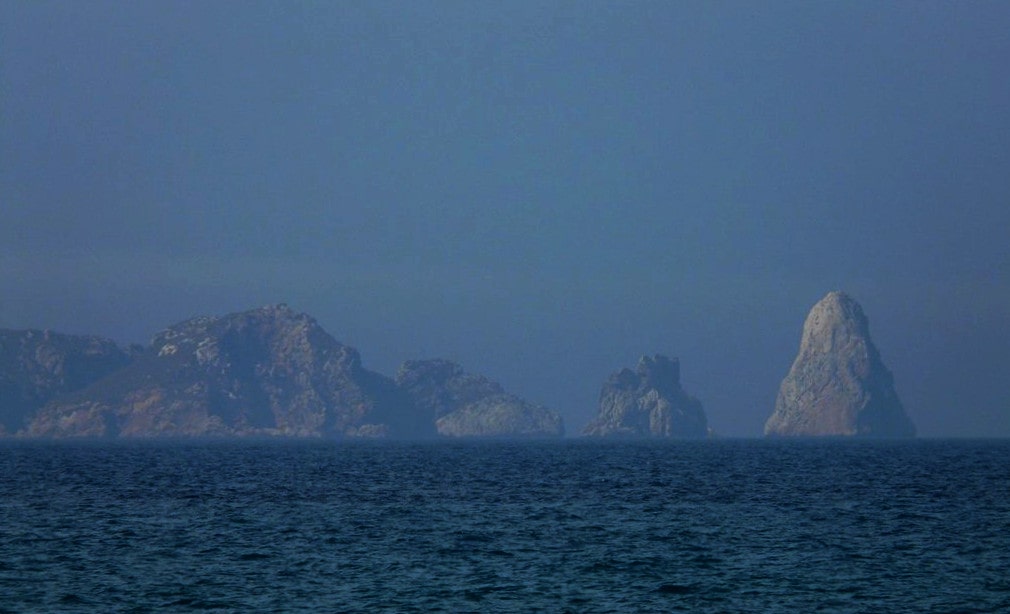
Medes Islands (Illes Medes) is a group of seven small, rocky islets in the Mediterranean Sea. The craggy islands are off the shore of the town L’Estartit in the Catalan province of Girona.
The best way to explore the area is by taking a ride in a glass-bottom boat from town. Alternatively, you can join a diving tour.
The clear water reveals a great marine wildlife. You can watch groupers, barracudas, and stingrays swim by, and even observe the bottom of the sea from the boat. If you go for a swim or a dive, you’ll discover even more of the spectacular natural park’s inhabitants.
In 1983, the Catalan authorities declared the islets a protected area. For that reason, stepping foot on the islands is forbidden. Nevertheless, you can admire their rough beauty from the comfort of your boat.
How to Get to Medes Islands from Barcelona:
- By car: Drive northeast on AP-7 from Barcelona to Medes Islands for 90 mi (145 km).
- By bus: Get a bus from Barcelona Nord to L’Estartit. The journey takes 2:20 hours.
- By train: There are no direct trains. However, you can take a train from Barcelona to Girona, and then hop on a bus from Girona to L’Estartit. The combined journey takes 2:40 hours.
29. Bosque Vertical – Pump Your Adrenaline with Ziplining, Swinging Ropes, and Laser Combat
The adventure park Bosque Vertical (El Bosc Vertical) is located in a forest in the mountains near Mataró. The parkours and zip lines in the trees provide a fun way to spend a few hours.
The aerial obstacles, swing ropes, hanging bridges, and zip lines are under constant supervision, so you and your kids can enjoy playing Tarzan in safe mode. You’ll need approximately an hour and a half to finish the eight different circuits.
If you like playing video games, try Laser Combat. The activities are similar to Paintball, but in this case, you’ll have a laser rifle to shoot at your opponents. In two hours, you’ll feel like a movie star, saving the forest galaxy. 😉
For the best views of the landscape, mount yourself on an electric bike and cycle around the breathtaking area.
After you’ve received your exercise and adrenaline kick, relax on the restaurant’s lovely patio.
How to Get to Bosque Vertical from Barcelona:
- By car: Head northeast on C-31 and C-32 for 22 mi (35.4 km).
- By bus: Depart from Gran Vía. The journey is around 40 minutes.
- By train: Currently, there’s no train connection.
30. PortAventura Park, Salou – Spain’s Most Iconic Theme Park
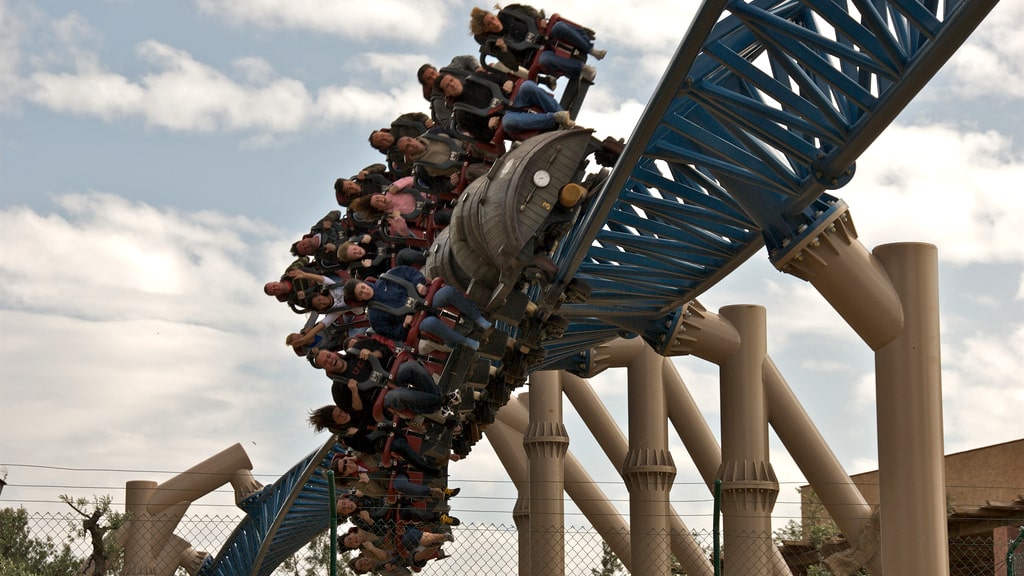
The entertainment resort PortAventura World features three different theme parks with separate entrances in Salou. The three parks are PortAventura Park, Caribe Aquatic Park, and Ferrari Land.
Apart from the parks, there are five hotels, a convention center, and even an RV park, making the resort the biggest one in Southern Europe.
The main park alone, PortAventura, attracts 3.5 million visitors per year. It’s the most visited theme park in Spain and the sixth in Europe. (Read more about the other two parks below.)
With its six worlds, 15 shows, and 43 rides, PortAventura is one of the most iconic theme parks in Europe.
Here are a few extra tips to make your visit memorable:
- Arrive as early as possible and try to avoid peak season.
- The express pass is worth investing in. With it, you can finish all the main attractions in about 4 hours, and then repeat your favorites.
- The park offers a good selection of restaurants. However, if you want to save a few bucks on food and beverages, bring your own.
How to Get to PortAventura Park from Barcelona:
- By car: Take AP-7 from Barcelona and drive for 70 mi (112 km) southwest.
- By bus: Take the bus from Passeig de Gràcia to Port Aventura. The ride is just under two hours.
- By train: Get a ticket for the R-16 line and get off at PortAventura Park.
31. Caribe Aquatic Park, Salou – Satiate Your Water Adventure Cravings
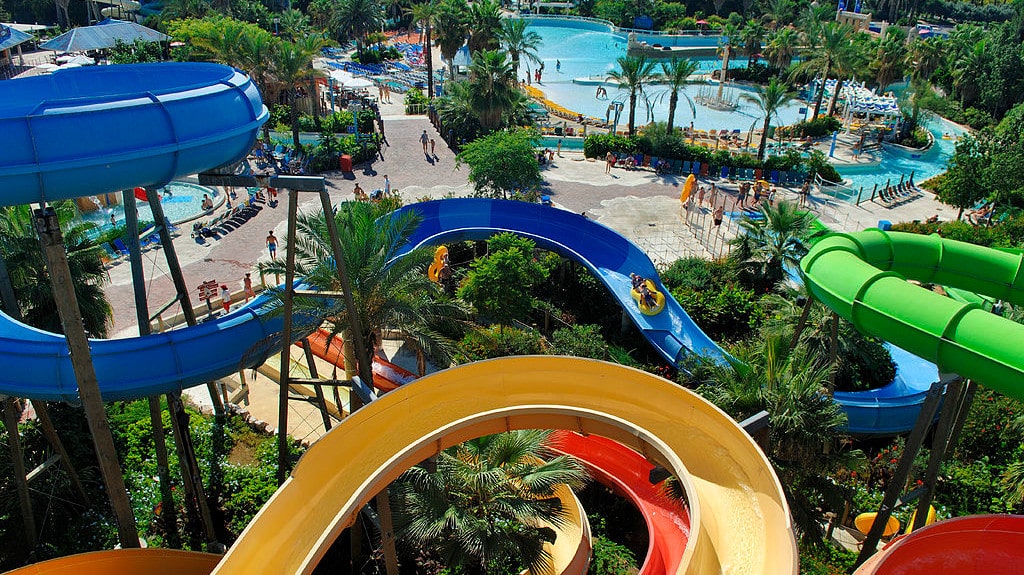
The waterpark Caribe Aquatic Park, a part of PortAventura World, will excite you with its numerous pools, fun slides, and even an indoor area.
Float around on the lazy river, surf the wave pool, and increase your adrenaline levels at the extreme water slides. There’s a pool and a slide for every age group in the Caribe Aquatic Park.
Here are a few extra tips to make your visit memorable:
- Bring your own food if you want to save some money as the food and beverages in the park restaurants are quite pricy. Also, the kiosks might close in the afternoon.
- Don’t forget the sunscreen! You’ll burn even faster in the water than on the sunbeds.
- Waiting times for the slides vary according to season and weather. Expect to stay for about 10 minutes in line on a busy summer day.
How to Get to Caribe Aquatic Park from Barcelona:
- By car: From Barcelona, take AP-7 and head southwest for around 1:30 hours.
- By bus: Take the bus from Passeig de Gràcia to Port Aventura. The ride is just under two hours.
- By train: Any R-16 train line run by Rodalies de Catalunya has a stop at the park.
32. Ferrari Land, Salou – Skyrocket Your Adrenaline
The Ferrari-inspired amusement park is not for the faint-hearted.
The entrance of the park is a futuristic gallery, dedicated to the Italian sports car manufacturer.
The main attraction – Red Force – accelerates you from 0 to 112 mi/h (180 km/h) in 5 seconds, making you feel like a real Formula 1 racer. With its 367 ft (112 m) of height, Red Force looks imposing from every corner of the park.
The other Ferrari Land ride which lovers of the extreme shouldn’t miss is the Thrill Towers: Free Fall Tower.
Here are a few extra tips to make your visit memorable:
- It’s worth investing a few extra bucks in a fast pass. This way, you’ll spend more time on the rides than in lines.
- When planning your visit to the park, have in mind that the queues in the early morning are longer than in the late afternoon.
- Bring your own food if you want to save some money as the food and beverages in the park restaurants are quite pricy.
- If you come to Ferrari Land in summer, don’t forget to bring sunscreen.
How to Get to Ferrari Land from Barcelona:
- By car: Get on AP-7 and head southwest for a little less than 1:30 hours.
- By train: Any R-16 line run by Rodalies de Catalunya stops at the park.
33. Andorra – Churches, Mountains, and Duty-Free Shopping

When you’ve had enough of Catalonia, you have one other option for a day trip from Barcelona – Andorra. The tiny mountainous country is just a few hours from the Catalan capital.
Though not a part of the EU, Andorra uses the euro, so you won’t need any extra currency exchanges. Plus, the country doesn’t have visa requirements for EU and US nationals, which makes it perfect for a day trip.
If you don’t feel like driving to Andorra, the next great way to reach the micronation is a bus. The first one leaves at 7:00 AM, so you’ll arrive just before lunch and have several hours to explore.
One of the coolest facts about Andorra is that its main city, Andorra la Vella, is the highest capital in Europe. The 3,356 ft. (1,023 m) elevation makes it a great starting point for hikes in summer.
But if you feel like shopping, Andorra is great for that since it’s a duty-free retail hub. The best place to do that? Meritxell Avenue.
Like Baroque architecture? Don’t miss the 12th-century Sant Esteve church.
As you can tell, despite its small size, there are a ton of amazing things to do in Andorra.
How to Get to Andorra from Barcelona:
- By car: Hop on C-16 and drive northwest for around 125 mi (200 km). The journey takes about 2:45 hours.
- By bus: Take the ALSA bus from Barcelona’s Nord bus station. The first bus leaves at 7:00 AM. The next bus departs at 10:30 AM.
There You Have it – The 33 Best Day Trips from Barcelona
Catalonia is full of things to do and see, and these 33 day trips from Barcelona prove it. Pick a few for your next visit and don’t forget to have fun!
Before you go to the Catalan capital, make sure you read our 33 Barcelona travel tips.
Now, tell us – which day trip are you going to make next time you’re in Spain?
Or maybe you’ve already explored some of the places on the list?
Either way, let us know by leaving a comment below.



*photos credit: WikiCommons, PXHere, and personal archive.



